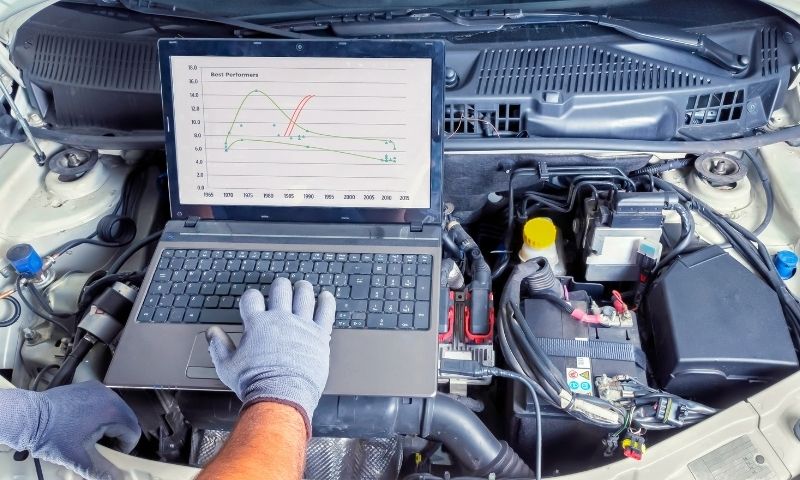A Leading Resource Built By Automotive Lovers, For Automotive Lovers.
We’ve helped consumers around the world make their purchasing decisions.
Latest Articles
To replace the battery in a Ford Galaxy key fob, use a small screwdriver to open the casing. Remove the old battery and insert a new CR 2032 battery, ensuring… To replace the battery in a Ford key fob, follow these steps: 1. Remove the key blade. 2. Use a flat screwdriver to gently pry open the fob. 3. Take… To replace the battery in Ford Fusion key fobs (2013-2020), use either a CR2450 or CR2032 battery. Watch a helpful DIY video for step-by-step guidance. Gather a flathead screwdriver and… To replace the battery in a Ford F150 key fob, follow these steps: 1. Press the button to release the key blade. 2. Use a small screwdriver to open the… To replace the battery in a Ford Fiesta key fob, start by separating the fob. Next, find the CR2032 battery inside. Use a small tool to take out the old… To replace the 12V battery in a Ford Escape, start by removing the airbox. Disconnect the negative battery cable first, then the positive. Remove the wiper blades and screws. Support… To replace the battery in a Ford Explorer key fob (2018-2024), follow these steps: Use a small screwdriver to open the key fob. Remove the old CR2025 battery and check… To replace the battery in a Ford C-Max key fob (2013-2019), first use a flat tool to open the fob. Remove the old battery and insert a new CR2032 battery… To replace the 12V battery in a Ford C-Max, follow these steps. First, remove the engine cover and battery cover. Disconnect the negative terminal by loosening the 10mm bolt. Next,… To replace the battery in a Ford 5-button key fob, follow these steps: 1. Remove the key blade. 2. Use a flat screwdriver to open the fob gently. 3. Take… Replace the battery in your 2013 Ford F-150 key fob with a CR2032 battery. Follow this easy DIY tutorial for a step-by-step guide. Check your owner’s manual for battery details…. To replace the battery in a 2017 Kia Forte key fob, use a CR2032 battery. First, gently pry open the fob with a flathead screwdriver. Remove the old battery, then… To replace the battery in a 2007 Honda CR-V key fob, follow these steps: 1. Flip the fob over and remove the screw with a Phillips #00 screwdriver. 2. Carefully… To replace the battery in a Fluke VoltAlert™ non-contact voltage tester, open the slide door on the bottom. Remove the old batteries and insert two new AAA (LR3) batteries. A… To replace the battery in your car key fob: 1. Find the notch; you might need to remove the interior key. 2. Open the fob by prying the two halves… To replace the battery in a 2014 Nissan Altima key fob, first remove the hidden key from the back. Use a small flathead screwdriver to carefully open the fob housing…. To replace the battery in a Flip Mino HD, first use a plastic opening tool to remove the labels and access two screws. Then, use a Phillips screwdriver to unscrew… To replace the battery in a Coast PX2 flashlight, turn the head counter-clockwise to remove it. Take out the battery cartridge. Insert three AAA batteries into the cartridge, ensuring they… To replace the battery in the Flawless Hair Remover, begin by removing the cap. Then, grasp the upper and lower sections and pull them apart to reveal the battery compartment…. To replace the battery in a 1st generation iPad (models A1219 or A1337), follow these steps: Gather tools for disassembly, remove the screen carefully, and swap the battery. Be aware… To replace the battery in your First Alert SC05 smoke detector, use 9V or AA non-rechargeable batteries only. Open the battery compartment by sliding the latch. Remove the old battery… To replace the battery in your First Alert alarm, gently open the battery compartment using the plastic tab. Take out the old 9V battery. Locate the positive (+) and negative… To replace the battery in a First Alert SA710 smoke detector, remove it from the wall or ceiling. Open the battery compartment and take out the old battery. Insert a… To replace the battery in a First Alert smoke alarm, follow these steps: 1. Remove the alarm from the wall or ceiling. 2. Open the battery compartment using the plastic… To replace the battery in a First Alert hardwired smoke detector, take the unit off the wall. Open the battery compartment, remove the old 9V battery, and insert a new… To replace the battery in your First Alert carbon monoxide detector, open the battery compartment using the plastic tab. Take out the old 9V battery. Insert the new 9V battery,… To replace the battery in a First Alert 9120 alarm, follow these steps: 1. Unplug the cable from the alarm. 2. Open the alarm compartment by pressing the catch on… {To replace the battery in a First Alert 9120B alarm, first unplug the power cable. Press the catch on the top left to open the battery compartment. Remove the old… To replace the battery in a First Alert 7010B smoke alarm, first disconnect the AC power. Open the battery compartment using the plastic tab. Remove the old 9V battery. Insert… To replace the battery in a Firex smoke alarm, locate the battery door and slide it open following the arrows. Remove the old battery from the battery carrier. Insert the…Replace Battery in Ford Galaxy Key Fob: Easy DIY Guide for Remote Change
Replace Battery in Ford Fob: Easy DIY Guide for Keyless Remotes and Tips
How to Replace Battery in Ford Fusion Key Fob: Easy DIY Guide for Remote Keys
How to Replace Battery in Ford F150 Key Fob: Easy DIY Guide for All Models
Replace Battery in Ford Fiesta Key Fob: Easy DIY Guide for Remote Key Users
How to Replace Battery in Ford Escape: Expert DIY Guide for 2013-2019 Models
Replace Battery in Ford Explorer Key Fob: DIY Guide for Troubleshooting & Programming
Replace Battery in Ford C-Max Key Fob: Easy Guide for Keyless Entry Remote
How to Replace the 12V Battery in Ford C-Max: Easy Step-by-Step Guide
How to Replace the Battery in a 5 Button Key Fob: Easy Guide for Ford Owners
How to Replace Battery in 2013 F150 Key Fob: Easy DIY Step-by-Step Guide
Key Fob Battery Replacement: Easy DIY Guide for 2017 Kia Forte SmartKey
Replace the Battery in Your Key Fob: A Guide for 2007 CR-V Owners
How to Replace Battery in Fluke Non-Contact Voltage Detector: Easy Step-by-Step Guide
Replace the Battery in Your Key Fob: Easy Steps to Open and Install
Replace Battery in Fob: Easy Guide for Optimal Performance and RC Pairing
Replace Battery in Flip Mino HD: Easy DIY Guide for 3rd Gen Users with Blinking Light Issues
Replace Battery in Flashlight Coast PX2: Step-by-Step Instructions for a Battery Swap
Replace the Battery in Your Flawless Facial Hair Remover: Quick Guide and Tips
Replace the Battery in Your First Generation iPad: Step-by-Step Repair Guide
Replace Battery in First Alert SC05 Smoke and CO Alarm: Easy Step-by-Step Guide
How to Replace Battery in First Alert Smoke and Carbon Monoxide Detectors Easily
Replace Battery in First Alert SA710: Step-by-Step Guide for Smoke Detector Safety
Replace Battery in First Alert Fire Alarm: Step-by-Step Guide for Safety and Chirping Issues
How to Replace Battery in First Alert Hardwired Smoke Detector: A Complete Guide
Replace Battery in First Alert Carbon Monoxide Detector: A Step-by-Step Guide
Replace Battery in First Alert 9120: Step-by-Step Guide for Smoke Detector Safety
How to Replace Battery in First Alert 9120B Smoke Detector: Step-by-Step Guide
Replace Battery in First Alert 7010B Smoke Alarm: Easy Step-by-Step Guide
How to Replace Battery in FireX Smoke Alarm: Simple Step-by-Step Guide



